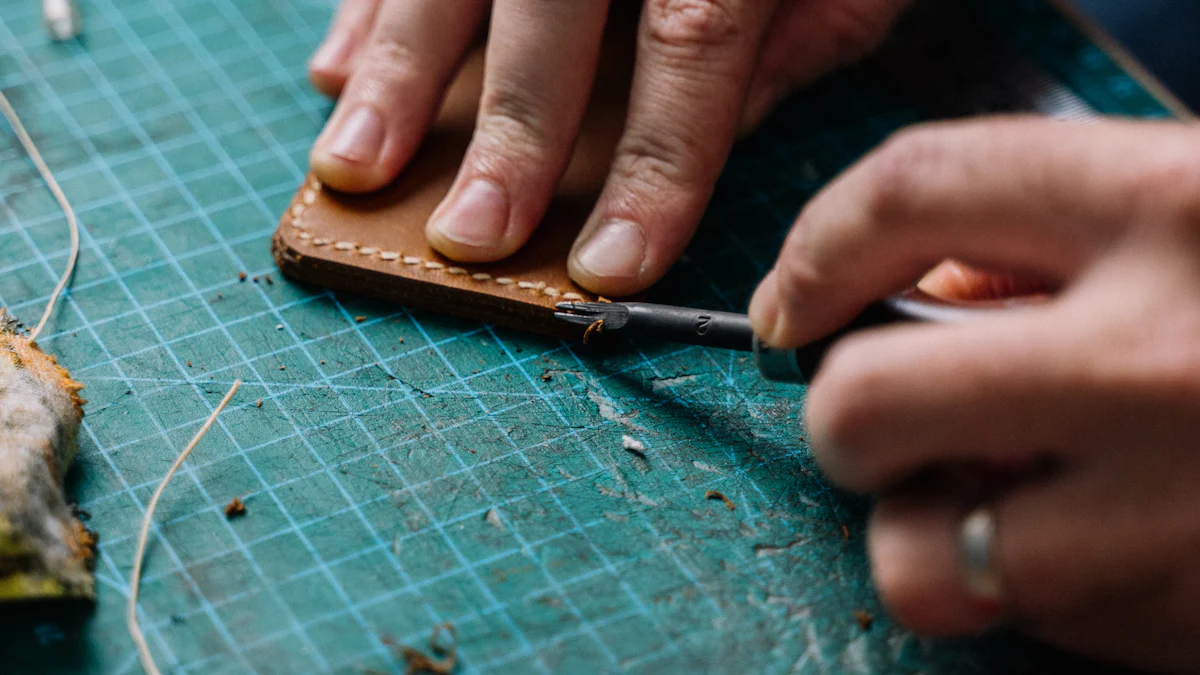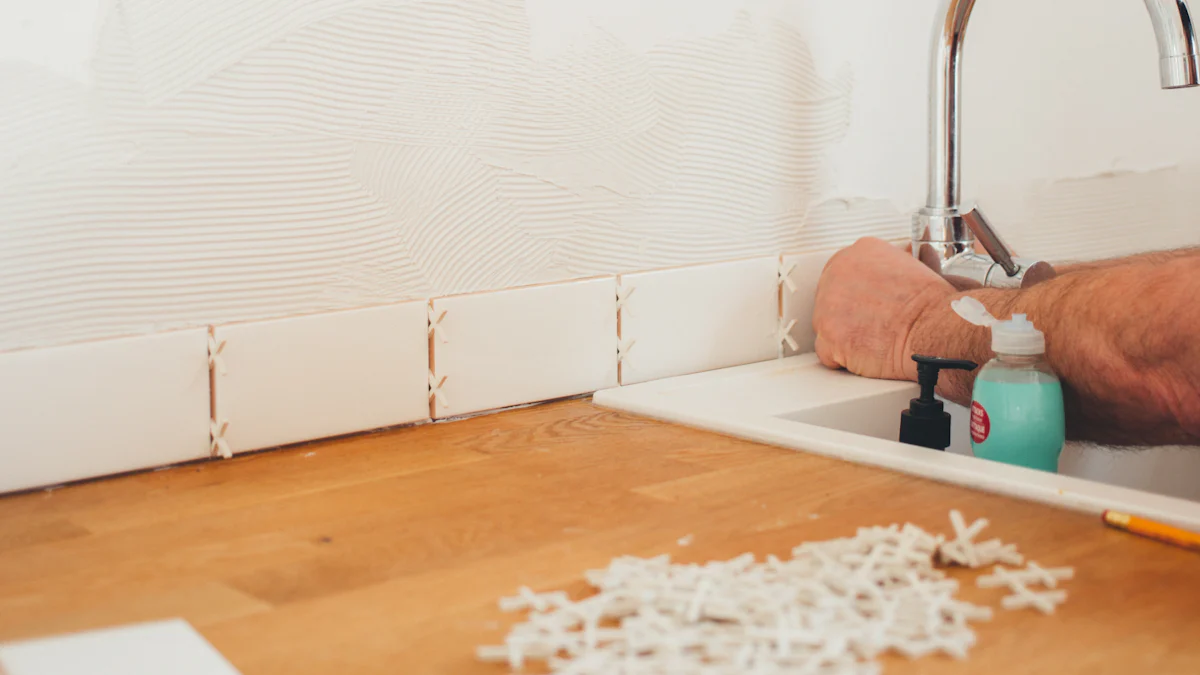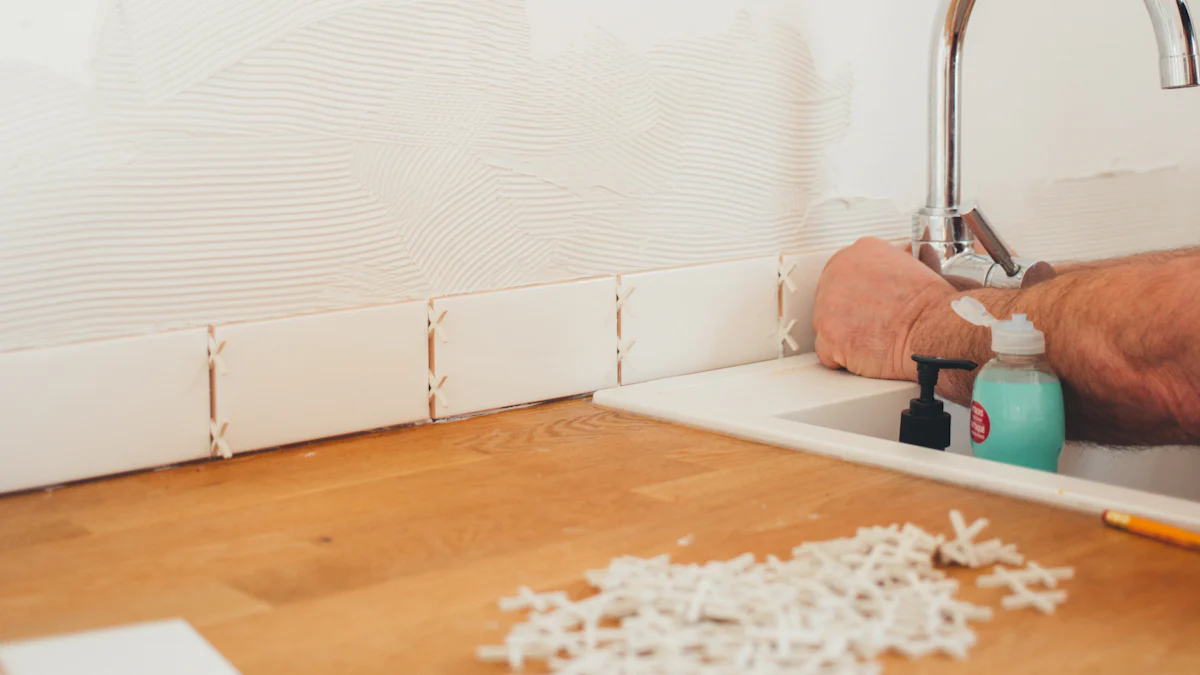
Formica, a popular choice in homes and industries, offers durability and style. Cutting Formica smoothly without chipping ensures a professional finish. Chipping can ruin the appearance and functionality of your project. You need the right formica cutting tools to achieve a clean cut. A sharp blade and steady hand make all the difference. Dive into the world of Formica with confidence and precision.
Understanding Formica
What is Formica?
Composition and characteristics
Formica consists of layers of paper and resin. Manufacturers press these layers together under high heat. This process creates a durable and versatile material. The outer layer often has a decorative pattern. You can find Formica in various colors and textures. The surface resists scratches and stains. Formica also handles heat well, making it ideal for countertops.
Common applications in home and industry
Formica finds use in many places. Homeowners love Formica for kitchen countertops. Bathrooms often feature Formica vanities. Office furniture sometimes includes Formica surfaces. Restaurants use Formica for tables and counters. Retail stores might choose Formica for display fixtures. Formica’s durability suits both residential and commercial settings.
Why Formica is prone to chipping
Material properties
Formica’s layered structure makes it prone to chipping. The top layer is thin and brittle. Cutting tools can easily damage this layer. Incorrect cutting techniques increase the risk of chipping. The edges require careful handling during installation. Proper support during cutting reduces chipping risks.
Common mistakes during cutting
Many people rush the cutting process. Fast cutting speeds cause chips. Dull blades lead to rough cuts. Incorrect blade types damage the surface. Inadequate support results in uneven cuts. Always measure twice before cutting. Proper preparation ensures smooth edges.
Preparing to Cut Formica

Getting ready to cut Formica involves more than just grabbing a saw. You need the right formica cutting tools and a well-prepared workspace. Let’s dive into what you’ll need.
Essential Formica Cutting Tools and Materials
Types of saws and blades
Choosing the right saw is crucial for a smooth cut. A jigsaw works wonders for precise cuts with its fine-toothed blade. This tool lets you cut in both curved and straight motions, making it versatile for various projects. A circular saw is another excellent choice. Ensure your saw blade is designed for laminate or particle board. These blades have sharp teeth that make cleaner cuts. Always aim for a slight overhang, which you can trim later for a perfect edge.
Safety equipment
Safety should always come first. Equip yourself with safety goggles to protect your eyes from flying debris. Wear gloves to safeguard your hands from sharp edges. A dust mask is essential to avoid inhaling any particles. Make sure you have these items on hand before starting your project.
Setting Up Your Workspace
Ensuring a stable surface
A stable surface is key to achieving a clean cut. Use a sturdy table or workbench to support the Formica sheet. Secure the sheet with clamps to prevent any movement during cutting. Stability reduces the risk of chipping and ensures precision.
Proper lighting and ventilation
Good lighting helps you see the cut line clearly. Set up your workspace in a well-lit area or use additional lamps if necessary. Proper ventilation is also important. Cutting Formica can produce dust and fumes, so ensure your space is well-ventilated to keep the air fresh and breathable.
By preparing your tools and workspace correctly, you’ll set yourself up for success. These steps will help you achieve a smooth, chip-free cut every time. So, gather your formica cutting tools, set up your space, and get ready to tackle your project with confidence.
Step-by-Step Cutting Process

Marking the Cut Line
Measuring accurately
Accurate measurements matter when cutting Formica. Use a reliable tape measure for precision. Double-check your numbers to avoid mistakes. A pencil works well for marking. Make sure the line is clear and easy to see.
Using a straight edge or guide
A straight edge or guide keeps your cut line true. Place the guide along your marked line. Hold it firmly in place. This tool helps you cut straight and prevents wandering. A stable guide leads to a clean cut.
Cutting Techniques
Using a circular saw
A circular saw offers power and speed. Choose a fine-toothed blade for smooth cuts. Position the Formica with the decorative side down. This method reduces chipping on the visible side. Move the saw steadily along the guide. Keep your hand firm but relaxed.
Using a jigsaw
A jigsaw provides flexibility for curves and angles. Select a blade designed for laminate. Start the cut with the Formica facing up. This approach minimizes chipping on the top layer. Guide the jigsaw slowly along your line. Patience ensures a clean result.
Finishing the Edges
Sanding techniques
Sanding smooths the edges after cutting. Use fine-grit sandpaper for best results. Work gently along the edge to remove rough spots. Circular motions help achieve an even finish. A smooth edge enhances the overall appearance.
Applying edge banding
Edge banding adds a polished look to your project. Choose a banding that matches your Formica. Apply adhesive to the edge and press the banding in place. Use a roller to secure it firmly. Trim any excess for a neat finish. Edge banding protects the Formica and completes the look.
By following these steps, you can cut Formica smoothly without chipping. Each technique plays a role in achieving a professional finish. With practice, you’ll gain confidence and improve your skills. Enjoy the process and the satisfaction of a job well done.
Expert Tips and Common Concerns
Tips for Avoiding Chipping
Blade selection and maintenance
Choosing the right blade makes a big difference. A fine-toothed blade designed for laminate works best. Keep the blade sharp for clean cuts. Dull blades cause chipping and rough edges. Regularly check the blade for wear and tear. Replace it when necessary to maintain quality.
Cutting speed and pressure
Control the speed and pressure while cutting. Fast speeds increase the risk of chipping. A steady pace ensures a smooth cut. Apply consistent pressure without forcing the saw. Let the tool do the work. This approach reduces mistakes and improves precision.
Addressing Common Issues
Fixing minor chips
Minor chips happen sometimes. Sand the chipped area gently with fine-grit sandpaper. This technique smooths out rough spots. For deeper chips, use a laminate repair paste. Match the color to your Formica for a seamless look. Apply the paste and let it dry completely. Sand the area again for a polished finish.
Preventing future damage
Prevent future damage by taking precautions. Always use a backing material when cutting. This support helps reduce chipping. Lay the Formica face-side down before cutting. This method minimizes visible chips. Secure the sheet with clamps to prevent movement. Stability during cutting ensures better results.
Peggy, an expert in Formica countertops, suggests using a circular saw for quicker cuts. She recommends laying the laminate face-side down and cutting from back to front. This technique helps avoid jagged edges and chips.
By following these expert tips, you can achieve a professional finish. Practice these techniques to improve your skills. Enjoy the satisfaction of a job well done.
Cutting Formica smoothly without chipping involves key steps. Use a fine-toothed blade and maintain steady pressure. Secure the sheet with clamps for stability. Practice these techniques to refine your skills. Confidence grows with each project.
Peggy shares, “A circular saw speeds up the job. Lay the laminate face-side down and cut from back to front for best results.”
Feel free to share your experiences or ask questions. Your journey in mastering Formica cutting is just beginning.
